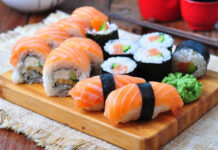Asian cuisine partly reflects the characteristics of the culture and customs of the countries in the region. To be able to feel all the quintessence in each dish, people need to use almost all of their senses. Let’s learn about the special features of this culinary culture.
Common features of Asian cuisine
Asian cuisine is the most authentic reflection of the culture, history, and character of each country in the region. The development of society makes people’s needs and standards in food also become more stringent. However, it must still be based on the long-standing tradition so as not to lose the original flavor of the dish. The common features of the cuisine from Asian countries that make it unique are:
Rice is the main dish in all daily meals. With the climatic conditions of Asia, rice is the main food crop, so instead of using bread like in European countries, people will eat rice.
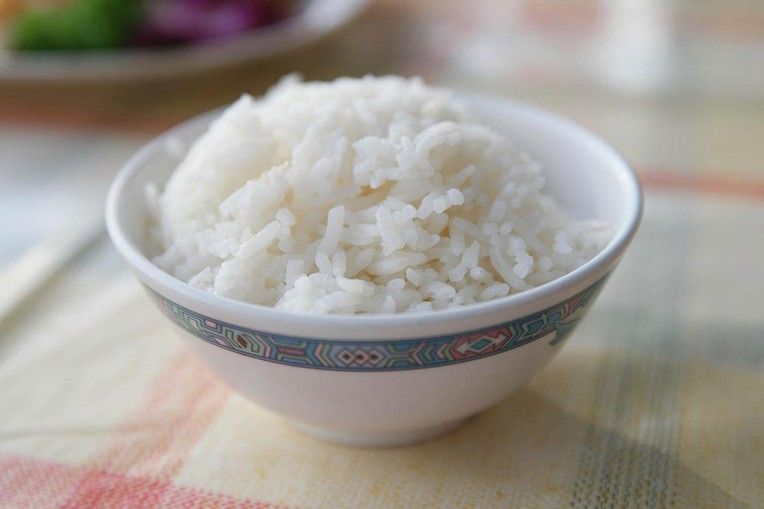
In Asian cuisine, cool dishes and ingredients from the sea are prioritized and appreciated. Asians are quite picky in the way they cook, sometimes being conservative about traditional methods. This is deeply influenced by the Asian personality.
Asian dishes often emphasize national traditions. Especially during holidays, New Year, worshiping ancestors, and traditional folk dishes are indispensable. Meanwhile, Europeans pay more attention to creativity and convenience, not limited to a standard rule.
Spices will make a big difference in the dishes of each country. Most Asian cuisines in other countries use ingredients that are easy to find, blend and combine to form a homogeneous mass. While Asians use dipping sauces to create richness for dishes, Europeans appreciate sauces.
Asians appreciate eye-catching and harmonious dishes, prioritizing those that are suitable for taste and feel delicious. Composition, the content of nutrients has less concern.
For Asian countries, using chopsticks is preferred while many other countries around the world will use knives, spoons, and forks.
Besides the commonalities between Asian cuisine compared to other continents in the world, each different country has its own distinct identity. This creates a diverse culinary paradise, containing the quintessence and uniqueness, leaving a mark on each nation around the world.
Indian cuisine – A combination of spices
In Asian cuisine, India is the country that has the least similarities with the rest of the region.
Indian food culture
The typical cultural features of food in India that you should not ignore can be mentioned as:
- The cuisine of India and neighboring regions have a special color with a full range of spices in each dish. You will be surprised at the abundance of popular spices in culinary processing.
- The culture of eating by hand, without using any tools is the first point that creates the characteristic of Indian eating. The use of hands to directly pick up food shows respect for the grain of rice that God has given, and gratitude to the Supreme Beings.
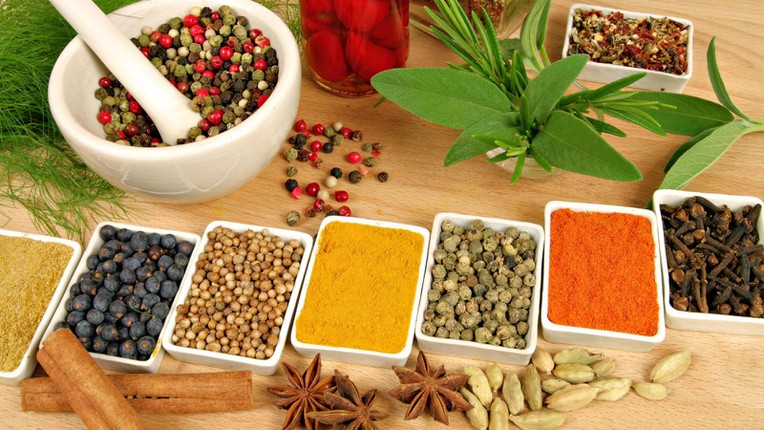
- India is considered a country of religion with three major religions: Hindu, Buddhist, and Muslim. According to the custom of each religion, in Indian cuisine, it is forbidden to sign beef and pork. Indians believe that eating large beef will have dinner with the gods and the mascot. They do not use or kill the animals that people worship.
- The way to prepare the same dishes is a special thing only in this country. Before cooking, rice will be sautéed in oil or butter, spices such as cinnamon, pepper, mint leaves, etc. will be added when the rice is almost cooked.
- It is because of the richness of spices used in processing that the colors in each Indian dish become more attractive and eye-catching.
- Most dishes have the appearance of buttermilk for the purpose of spiritual purification. What makes the difference that is only in the Indian country in Asian cuisine is often using milk, and dairy products as desserts in all meals.
Typical Indian dishes
When it comes to Indian cuisine, you cannot ignore the following dishes:
- Curry is a dish associated with Indians known all over the world. There are many attractive Indian curries such as chicken curry, egg curry, and vegetable curry, but the most irresistible is Chole bhature curry.
- Pokara is the perfect combination of plants and animals including chicken and vegetables like okra, eggplant, broccoli, onion, spinach, and potato.
- Gulab Jamun is an Indian dessert that is used mainly for holidays, parties, birthdays, weddings, etc. Gulab Jamun has the same shape as a Vietnamese floating cake, made from a type of cake. Traditional Indian milk.
- Vada is a sandwich with a filling made from mashed potatoes mixed with typical Indian spices. This dish is used similarly to the European hamburger.
- Biryani mixed rice served with chicken, lamb, and vegetables. cumin, beans, cinnamon, coriander, and saffron. This is a typical and popular rice dish used by Indians most of the time.
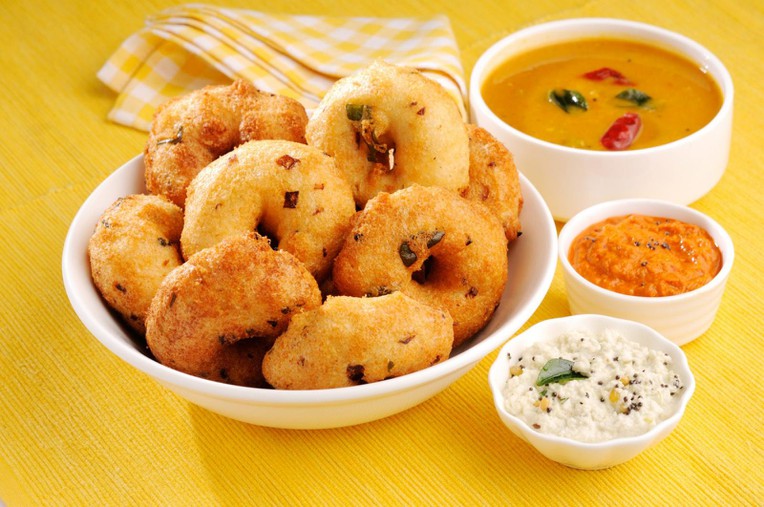
Chinese food – Asian cuisine is honored in the world
China is rated as one of the top 10 countries with the world’s leading cuisine. Chinese cuisine has its own regional characteristics, rich in colors and flavors, and has a great influence on Asian countries. The unique characteristics of Chinese cuisine are:
- Most Chinese dishes have strong flavors. The Chinese favor fried, grilled, and steamed dishes with eye-catching colors.
- Spices that are almost indispensable in Chinese dishes are onions, garlic, chili, cinnamon, anise,…
- The Chinese are very fond of flour when cooking. Therefore, the typical dishes when talking about Chinese cuisine are noodles, dumplings, and dumplings.
- Noodles have become an artful dish in Chinese cuisine. The length of the noodles is considered to represent a long life.
- Dumplings or dumplings are used at any meal of the day. Can be used as a main or side dish.
- Dumplings can be said to be an indispensable dish in the kitchen cabinets of any family in China. For Chinese culture, dumplings represent affluence and family reunion.
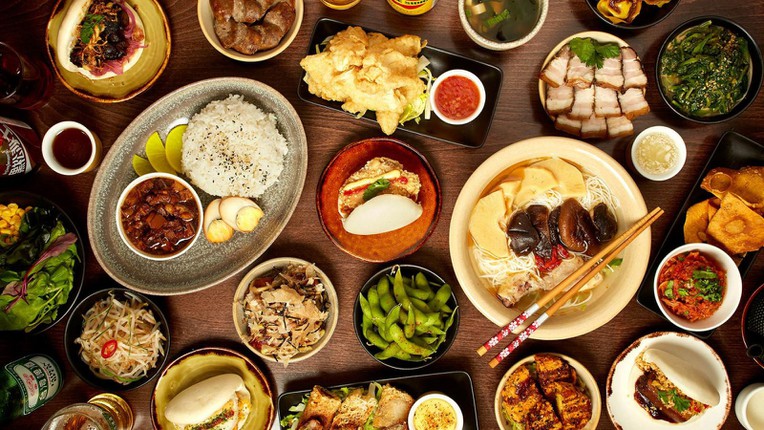
Japan – The cultural interference of Asian cuisine
Japan has always been famous for being a country that upholds rituals, rules, and sophistication from greeting culture to eating and drinking. The indispensable features of Japanese culture to contribute to the richness of Asian cuisine :
- Japanese cuisine is famous for its sophisticated way of processing each dish. The sophistication of Japanese cuisine is the process of perfectly combining the culture of this country with Chinese and Western cuisine.
- Most Japanese dishes will adhere to the “three five” which are five flavors, five colors, and five dharmas.
- Not simply a mere dish like other countries. For the Japanese, each dish has a special meaning to show people’s respect for food.
- Japan is famous as a country with healthy, healthy food. Rice balls, seaweed, and fresh fish have become Japanese culinary brands worldwide.
- The Japanese often use ingredients that are low in calories but high in nutrients.
- In particular, Japanese cuisine also focuses on table culture such as invitations and thanks for the food.
- The Japanese prefer types of uncles and chopsticks with many patterns which will often have a difference according to the season of the year.
- Sushi is a traditional Japanese dish and is prepared according to the four seasons of the year. The tea ceremony, calligraphy, and traditional music are high-level forms of art in Japanese culture.

Korean cuisine
For Asian cuisine, Korea is a country with many cultural features similar to Vietnam. In the food culture, the unique features that make up the culinary culture of Kim Chi that is known to the world include:
- Kimchi is an indispensable dish for Koreans and has become a culinary brand for this country when placed on the world table. For Koreans, kimchi is a pride, representing the culture as well as refining the nation’s cuisine.
- Rice is the staple food in all meals. Rice becomes the main dish along with side dishes and of course, kimchi cannot be ignored.
- Typical Korean spices in dishes are scallions, garlic, sesame, soy sauce, sesame oil, and chili powder.
- In order to prepare dishes from the freshest and most delicious ingredients, Korean cuisine is characterized by seasonality. This ensures nutrition in each daily meal.
- Koreans have their own principles in table decoration and have become a traditional feature imbued with the culture of Kim Chi.
- Similar to Japan, the tea ceremony is also an art and creates a uniqueness in the culinary culture of Korea. The tea ceremony, meditation, and spiritual and ethical cultivation for contemplation of life are typical images for Koreans.
Southeast Asian cuisine – Simple but delicate
For Vietnamese people in particular and Southeast Asia, nowadays, the concept of eating is no longer “eating to live” but rather “enjoying”. With variations based on traditional recipes, the dishes of Southeast Asian countries have affirmed their position on the world culinary table.
- Southeast Asian countries often simplify the way they prepare food, but leave a feeling of numbness and ecstasy at the tip of the tongue.
- The biggest common point in Southeast Asian cuisine is the use of fresh food sources, simple preparation and a balance of flavors with distinct dipping sauces.
- In Asian cuisine , dishes from Southeast Asian countries are considered to be harmonious by the balance between sour, spicy, salty, and sweet flavors.
What makes Asian culinary identity in each country?
Southeast Asia includes the countries of Vietnam, Thailand, Laos, Cambodia, Indonesia, Malaysia, and Brunei. With their own distinctive features, each Southeast Asian country has contributed to the richness of Asian cuisine in general.
- The typical heat of Thailand has created unique dishes that are hard to resist if you set foot in this country. From dishes with pungent taste and sweet aroma such as shrimp sour soup, papaya salad, chicken curry to mango sticky rice, pumpkin juice with coconut milk, pineapple sticky rice cake, .. all make everyone have to admire. praise.
- Malaysian cuisine is a blend of many Asian cultures such as China, India, Nyonya along with indigenous styles to create a unique feature in each dish. It is not too difficult to explain why people call Malaysia the Asian culinary paradise . Nasi Lemak is the most unique dish of Malaysians.
- Vietnamese people focus on eating well, then nutrition. With an S-shaped country, the cuisine is deeply influenced by old customs, but there is no shortage of combinations from newly imported cultures. Pho, bread are typical dishes that anyone coming to Vietnam must enjoy. In addition, spring rolls are also a strange dish and are ranked in the top 10 favorite dishes in Asian cuisine in the world.
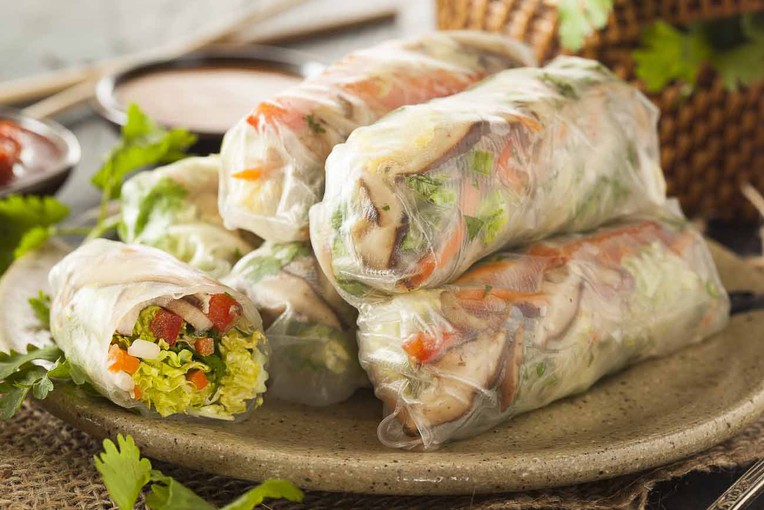
- The dishes from Cambodia partly reflect the culture of this country. Simple, rustic from ingredients to processing. Amok dishes such as amok steamed fish, amok chicken soup,… show the quintessence of Cambodian cuisine.
- Although only a small country, Singapore is world famous for its level of development and its own culinary style. Although modified from many other countries, Singapore’s dishes have the “soul” of the country. Crab with spicy chili sauce is one of the famous Singaporean dishes in the world. The pungent taste of chili mixed with smooth sauce, crab brings a lot of nutrition. This can be said to be a great dish that only in Singapore.
Learn and discover Asian cuisine from many different countries, surely everyone must be surprised with the richness and significance of this culture. However, the above sharing is only a small part of the great treasure of knowledge of Asian cuisine in particular and the world in general. Over time along with the changes of society, objective factors will partly change the culinary culture of each country.
However, knowledge is endless, so do not hesitate to discover more new things of culinary paradise!


